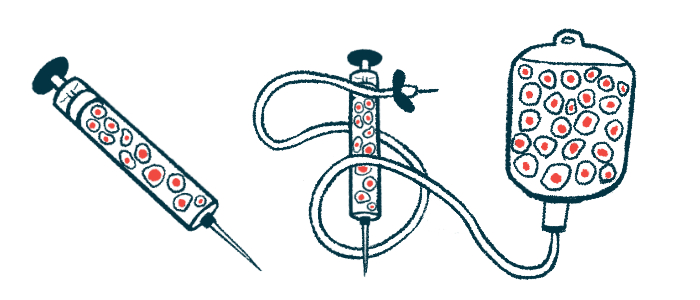Stem cell therapy may slow brain damage in Huntington’s disease
In study, both Nestacell doses resulted in significantly lower UHDRS-TMS scores
Written by |

An investigational treatment prepared from stem cells found in young teeth appears to be safe and to help adults with Huntington’s disease move better and carry out daily tasks more easily, perhaps by slowing damage to the brain, according to data from a Phase 2 clinical trial.
Called ADORE-DH (NCT03252535), the completed, placebo-controlled study sought to identify the most effective dose of Nestacell given as infusions into a vein, or intravenously, to provide clinical benefit for patients at a single site in Brazil.
“NestaCell may represent a novel approach to treating a disease that remains challenging to manage,” wrote the researchers, who plan a larger, multicenter Phase 3 trial to confirm how well the treatment works and how safe it is over time.
The findings were described in the study “Phase II trial of intravenous human dental pulp stem cell therapy for Huntington’s disease: a randomized, double-blind, placebo-controlled study,” which was published in Stem Cell Research & Therapy. It was funded by Nestacell’s developer Cellavita and conducted by Azidus Brasil, a contract organization that offers outsourced research and development services, particularly in clinical trials.
Huntington’s is a genetic disease that damages nerve cells in the brain, causing symptoms thast range from problems with movement to difficulties thinking and planning tasks. There is no cure and available treatments can only ease its effects.
Nestacell contains stem cells from the dental pulp of milk teeth from healthy children, aged 5 to 12. The dental pulp is a tooth’s innermost layer and its stem cells have the ability to mature into various cell types, including nerve cells. A treatment based on these stem cells should therefore ease symptoms and slow or stop Huntington’s progression.
Changes in UHDRS-TMS score
In a previous Phase 1 trial (NCT02728115), six adults with Huntington’s received three infusions of Nestacell at monthly intervals and were followed for two years. The treatment was safe and well tolerated. Five participants showed motor improvements within two weeks that lasted up to nine months after the final dose. All six patients were eligible for additional doses to sustain the benefits.
The Phase 2 study included 35 adults with Huntington’s who were randomly assigned to either one of two doses of NestaCell (1 or 2 million stem cells) or a placebo over nearly one year. The participants received their assigned treatment in three cycles, each comprising three monthly infusions separated by a two-month interval. Thirty-two patients completed the study.
The main goal was to watch for changes in the Unified Huntington’s Disease Rating Scale-Total Motor Score (UHDRS-TMS), where lower scores indicate better motor control.
Both doses resulted in significantly lower UHDRS-TMS scores over the placebo, which was associated with a score increase, reflecting worse motor impairments. There were no statistical differences between the two treatment doses in terms of benefits. Secondary goals included changes in how well daily tasks were accomplished, with higher scores indicating better ability.
The higher dose did result in a significant improvement in total functional capacity over the placebo, suggesting “NestaCell may mitigate the functional decline characteristic of Huntington’s,” the researchers wrote.
Brain MRI scans before and after treatment suggested those treated with Nestacell tended to lose less white matter volume, or that which corresponds to nerve cell fibers in the brain, relative to those on the placebo. While these effects were promising, the data were not yet considered definitive, researchers said.
Both doses of Nestacell were generally safe and well tolerated, and there were no reports of serious adverse events deemed related to it.
“NestaCell has the potential to offer a meaningful therapeutic benefit for patients with [Huntington’s],” wrote the researchers, who noted its “good safety profile, promising efficacy data, and potential disease-modifying effects.”
“The current findings justify further investigation in a larger, multicenter Phase [3] trial to validate efficacy, monitor long-term safety, and explore biomarker correlations,” they wrote.



